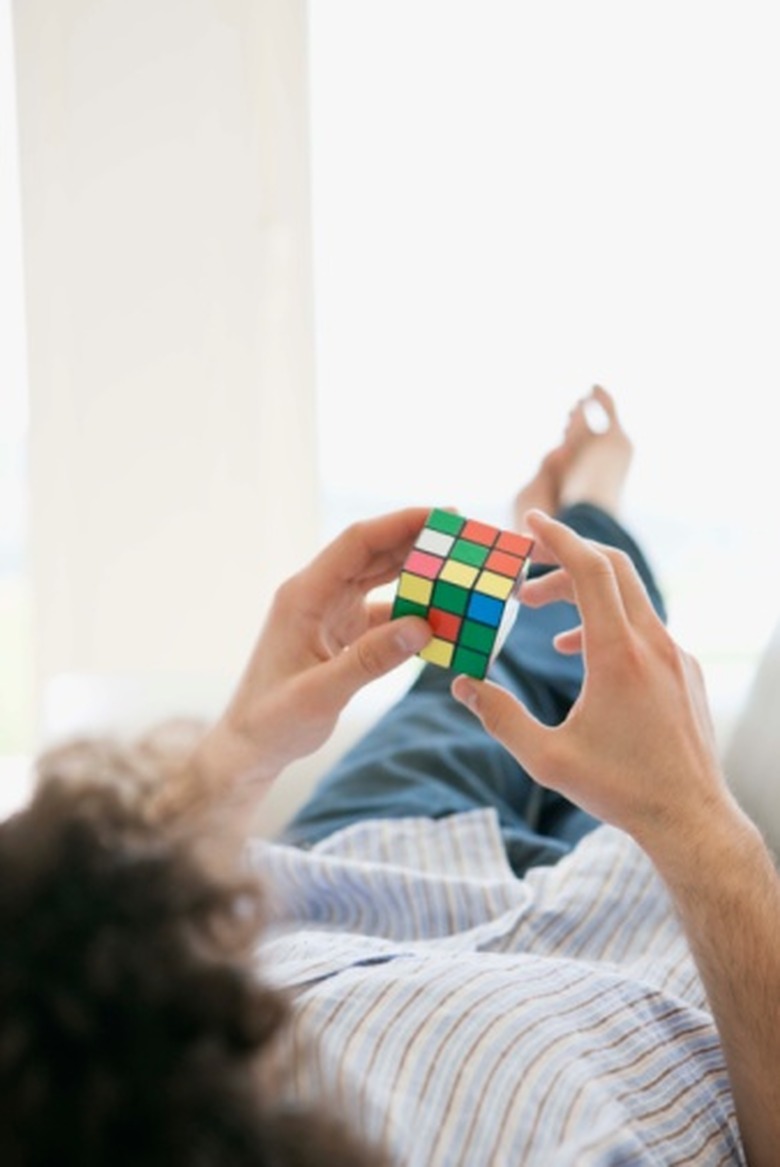Rubik's Cube Science Fair Project Ideas
The Rubik's Cube, created by Hungarian inventor Erno Rubik, is considered one of the world's best-selling toys. Even during a recession, global sales of the Rubik's Cube reached 15 million in 2008. The mathematical and intellectual challenge that defines the Rubik's Cube presents school children with the opportunity to devise several projects for a science fair.
Comparative Timed Projects
Comparative Timed Projects
Comparing different methods of solving a Rubik's Cube can be the subject of a science fair project. This project determines the fastest method by which a Rubik's Cube can be solved. The student must conduct research to learn multiple ways to solve the Rubik's Cube. Once the student has identified various solution methods and has practiced them, he should time himself solving the Rubik's Cube with each method. After timing himself in numerous trials of each method and calculating his average solution times, the student can identify the fastest Rubik's Cube solution method and explain why he believes it is the fastest.
Psychological Projects
Psychological Projects
A student more interested in the psychological sciences can use a Rubik's Cube to create a science fair project focused on cognitive development. The Rubik's Cube is a puzzle individuals of all ages can enjoy; the World Cube Association lists three-year-old children as Rubik's Cube solvers. A science project focused on cognitive development will answer whether age impacts Rubik's Cube-solving performance by grouping volunteers into several age groups and timing their ability to solve the Cube.
Computer Science Projects
Computer Science Projects
For more advanced students with computer science experience, the Rubik's Cube can serve as the basis for a computer programming science fair project. An example of an objective for such a project would be to create a program that calculates the moves necessary to solve a Rubik's Cube once the user enters information regarding its position. The average time or the average number of moves suggested by the program to solve the Rubik's Cube can be the subject of such a project.
Geometrical Projects
Geometrical Projects
A science fair project does not need to be just about solving the Rubik's Cube. The different colors of the Rubik's Cube can create several patterns. A science fair project can explore the different types of patterns that can be created from the Rubik's Cube. For each geometrical pattern, the student can determine the number of moves it took to create the pattern and identify which pieces have moved from the original configuration.
Cite This Article
MLA
Rook, Julie. "Rubik's Cube Science Fair Project Ideas" sciencing.com, https://www.sciencing.com/rubiks-cube-science-fair-project-ideas-12749420/. 15 May 2011.
APA
Rook, Julie. (2011, May 15). Rubik's Cube Science Fair Project Ideas. sciencing.com. Retrieved from https://www.sciencing.com/rubiks-cube-science-fair-project-ideas-12749420/
Chicago
Rook, Julie. Rubik's Cube Science Fair Project Ideas last modified August 30, 2022. https://www.sciencing.com/rubiks-cube-science-fair-project-ideas-12749420/
